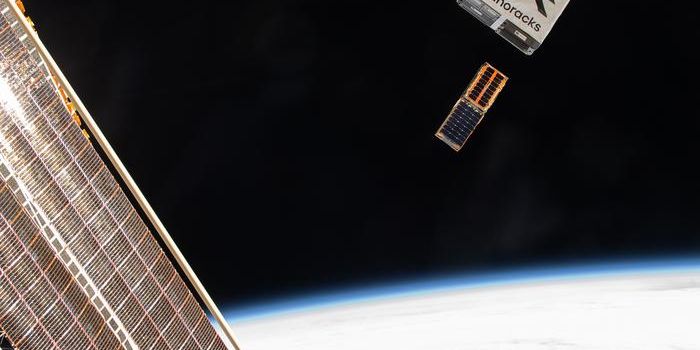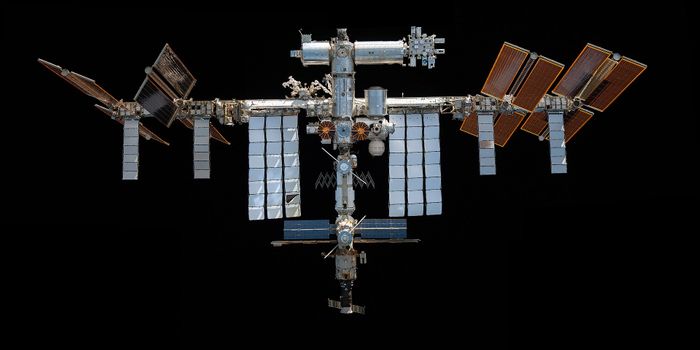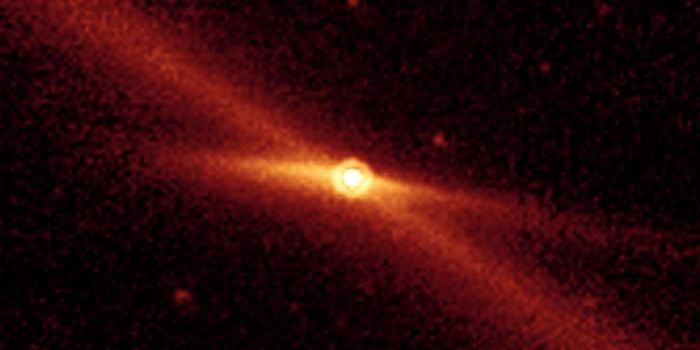Supermassive Black Holes are Activated and Fed by Intergalactic Gas
An international team of researchers led by the University of Copenhagen recently used numerical simulations to examine the mechanisms behind how supermassive black holes like the one at the center of our galaxy, Sagittarius A*, are both activated and grow by consuming intergalactic gas that is transported between galaxies, which occurs either through galaxies colliding or passing in close proximity to one another.
Colliding spiral galaxies NGC 2207 and IC 2163. (Credit: NASA and The Hubble Heritage Team)
"Our observational data demonstrates that gas from galactic interactions can be transported through a galaxy and down to the black hole at the center of it. This will cause it to be activated. We see a direct connection between gas outside galaxies and the chance of active supermassive black holes," said Dr. Sandra Raimundo, who is an assistant professor from DARK at the Niels Bohr Institute, and lead author of the study.
A longstanding question in astronomy is how gas reaches a black hole, and the researchers were able to at least partially demonstrate how this happens by observing 3,000 targets galaxies for their study, which is the first time observational data has been used to demonstrate how black holes grow so large.
"For a supermassive black hole to grow, gas must fall into it, which increases its mass. This is known as ‘accretion’. When this happens, we consider a black hole to be active. We can observe this because as the gas heats up, it releases huge amounts of energy in the form of electromagnetic radiation, before plummeting into the black hole. This is something that we can measure from Earth,” explains Dr. Raimundo.
The study’s findings also demonstrate what’s known as “misaligned gas”, which refers to how gas within a galaxy is rotating in the opposite direction of the galaxy itself, which the researchers observed in a large number of the 3,000 galaxies they observed.
"These observations provide us with a clear link between interacting galaxies, ‘misaligned gas’ and active black holes, where gases are able to reach the center of the galaxy and cause black holes to grow," said Dr. Raimundo.
This study could also lead to helping scientists better understand how supermassive black holes like Sagittarius A* at the center of our own galaxy could contribute to the birth of new stars.
"In order to study how black holes and star formation in galaxies are connected, we first need to understand how black holes develop, when and how they become active. This study gets us a lot closer to such an understanding,” said Dr. Marianne Vestergaard, who is a professor from DARK at the Niels Bohr Institute, and co-authors on the study. "The exciting thing about these observations is that it is the first time it is possible to identify gas that has been captured from other galaxies and trace it all the way down to the center, where the black hole consumes it.”
While Sagittarius A* at the center of our galaxy is currently considered dormant, the misaligned gas hypothesis presented in this study could mean that gas traversing our galaxy could awaken this sleeping giant.
What new discoveries will scientists make about supermassive black holes and their growth mechanisms in the coming years and decades? Only time will tell, and this is why we science!
Sources: Nature Astronomy, University of Copenhagen
As always, keep doing science & keep looking up!









